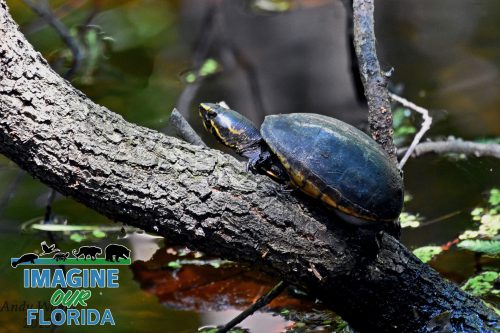Striped Mud Turtles (Kinosternon baurii) are small turtles that grow to only 4″ to 5″ long. They usually have 3 visible stripes on their shells and 2 yellow stripes on each side of their faces. These native semi-aquatic turtles live in and near brackish and freshwater in ditches and ponds. Dinner consists of algae, snails, insects, worms, seeds, and carrion.
Females may travel up to 820 feet away from the wetlands to lay a clutch of 1-6 eggs. Temperature determines the sex of the embryo. The embryo may pause its development until the correct temperature is reached. Incubation lasts from 2 1/2 to five months. The hatchlings are about 1′ long and may take more than a year to leave the nest.
Striped Mud Turtles depend on waters with low saline content. This makes them especially vulnerable in the Lower Keys, where sea level rise is expected to cause saltwater intrusion into freshwater habitats. More intense storms will cause many low-lying areas to be inundated with saltwater, thus making the ecosystem uninhabitable for Striped Mud Turtles. Human-caused pollution and oil spills also threaten these little turtles.
Striped Mud Turtles spend much of their time underwater and can often be seen in shallow waters. When in wetlands, keep an eye out for movement in mud, marshes, and wet fields and you may meet a new wild turtle friend.
Photo Credit: Andy Waldo.

